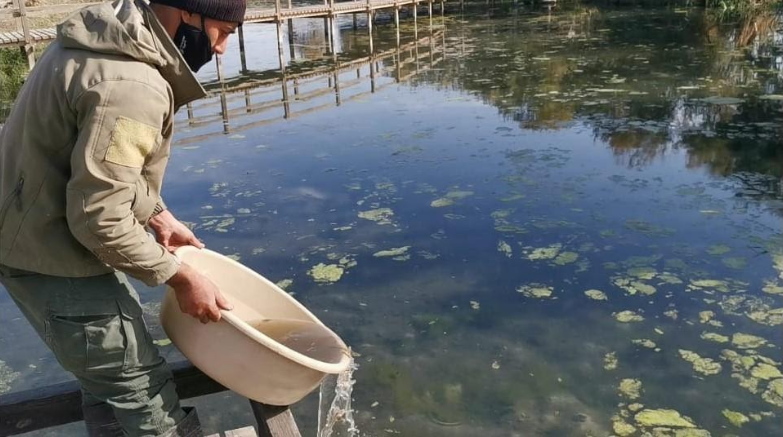Restoration of the Azraq Wetland, Jordan

03 May 2021
The Azraq Oasis is a wetland of unique international importance located between a limestone desert on the west and a basalt desert on the east. In addition to its natural and biological richness, it is distinguished by its historical and cultural richness thanks to its strategic location and water resources. It is home to many important archaeological sites, including the famous “desert castles”. In addition, the Azraq Reserve is now a source of income for around 60 families from the local community.
According to the Royal Society for the Conservation of Nature (RSCN), due to the excessive pumping of water from the oasis to large urban areas and the illegal drilling of artesian wells for agricultural purposes, water levels have steadily dropped over the course of 50 years, starting to decrease significantly in 1981 and reaching alarming rates in 1993. These high levels of water extraction resulted in the extreme depletion of this natural oasis, drying up massive areas of invaluable wetland, equaling over 25 km2. In 1992, the main springs which were feeding the wetland had dried out and the water level reached a depth of 12 meters below ground level. The water body that used to be a thriving ecological hotspot has dwindled alarmingly to cover 0.04% of the area it used to cover in the past. The effects of this process can be clearly seen in the declining numbers of birds stopping over in the Azraq wetland on their migratory route.
Restoring what we destroy, the only way forward to survive
In order to save this natural jewel, RSCN managed in 1994, with international support, to restore a significant part of the wetland and to build special boardwalks and bird hides to allow visitors to observe the birds that finally returned to the wetland.
In September 2020, as a continuation of the habitat restoration efforts in the Azraq Wetland Reserve and with support from the French Global Environment Facility (FFEM) and French Development Agency (AFD), RSCN started rehabilitating three existing pools in the reserve. RSCN firstly stopped pumping water into these pools and then dried them out completely.
Drying out the three pools was especially necessary after the increase in the number of exotic fish, algae and aquatic plants and a significant increase in phosphorus rates, in addition to the destruction of the edges of these pools as a result of the continuous entry of water buffalos into them. The pools became unsuitable habitats for most vertebrate species previously occurring, especially the Azraq killifish (Aphanius sirhani), endemic to the oasis and whose numbers have decreased dramatically in these pools.
By the use of heavy machinery, peripheral reeds and typhas were controlled, and top soil was added so as to allow gentle slopes and avoid too deep habitats.
Pools were thus prepared with appropriate shoreline edges, levels, etc., to form “new” water bodies free of alien species. Thereafter, water was allowed to flow once more into the restored pools, and vegetation quickly recolonized them.
Then by mid-December 2020, ca. 650 killifish individuals were collected from other pools in the reserve and reintroduced to this restored environment.
During the process of rehabilitation and release of fish, many killifish passed through water culverts to other water pools, especially through the drainage system. The Common kingfisher has also become a regular visitor to the recently restored pools, thanks to the killifish that feed this bird.
RSCN thereafter conducted a water quality monitoring in the pools by testing devices like TDS, temperature, conductivity, and PH.
Restoration benefits human well-being and biodiversity
This successful restoration of pools generated a wide range of benefits–not only for the only endemic fish (Sirhani fish), but prepared appropriate habitats for Azraq killifish and migratory birds, provided more natural landscapes for Azraq Reserve visitors, and led to preserving and maintaining 10% of the former oasis which is the strategic goal of the Reserve management plan.
Story as originally published by MedWet A success story: restoration of the Azraq Wetland, Jordan - Mediterranean Ramsar Site Managers Network (medwetmanagers.net)
Photo credits Hazem Khreisha


